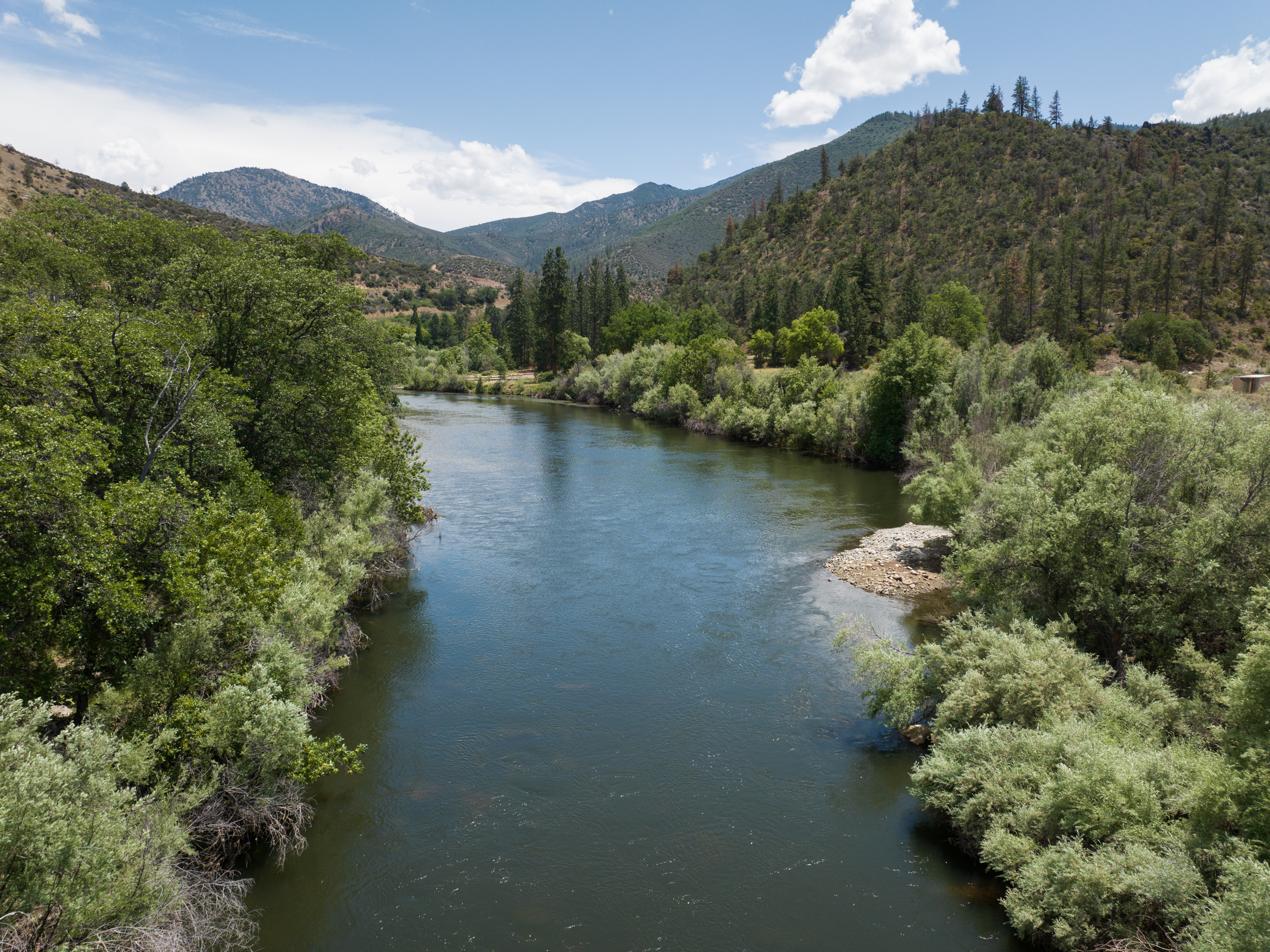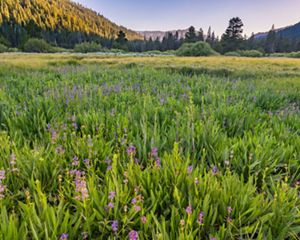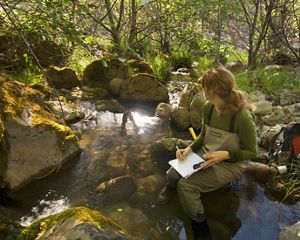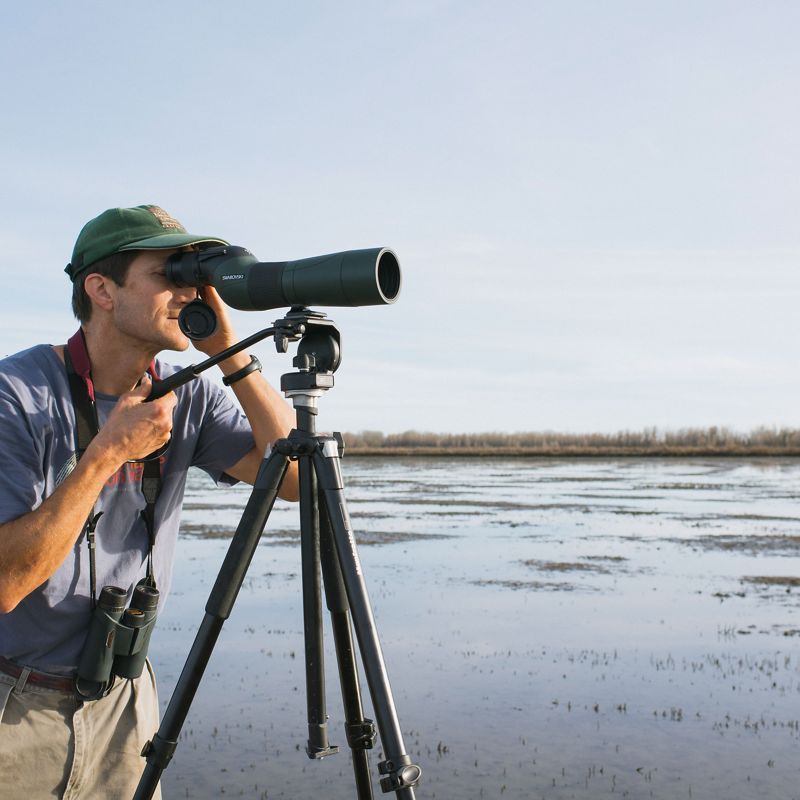
Strategy Driven by Science
TNC has the scientific expertise and policy strategy to solve pressing environmental challenges and achieve big results for California.
The Nature Conservancy (TNC) is a science-led, global nonprofit working towards a future with a livable climate, healthy communities and thriving nature. With seven decades of on-the-ground experience, we pair rigorous science with policy expertise to achieve systemic change.
California voters have shown time and again that they are invested in protecting nature.
TNC-led Policy
-
The Nature Conservancy supports market-based mechanisms as a tool to combat climate change and meet the needs of both people and nature. As the impacts of climate change intensify, our need to drive down greenhouse gas (GHG) emissions is greater than ever before. TNC played a key role in establishing California’s Cap-and-Trade Program, which is also referred to as the Cap-and-Invest Program. The Program is a key strategy to cost-effectively reduce GHG emissions over time.
By using economic incentives, the Program complements other measures the State uses to reach our climate goals. Almost 20 years after the original legislation, Assembly Bill 32, was passed, TNC is now engaging in legislative discussions to reauthorize the Cap-and-Invest Program so California can continue its legacy of environmental leadership. Reauthorizing the Program will provide regulatory stability and continue to generate revenue that fund critical climate programs.
-
In November of 2024, California voters overwhelmingly supported the passage of the nation’s largest ever climate resilience bond. TNC is proud to have sponsored this effort in the Legislature and to lead the Prop 4 campaign in collaboration with a diverse set of partners to secure critical climate investments. Prop 4 provides dedicated funding to prevent devastating wildfires, provide clean, safe drinking water, protect the air we breathe, and preserve our iconic lands and waters and rich biodiversity.
These urgent investments in proven solutions will protect our communities, health, and economy. TNC is now focused on implementing Prop 4, working closely with legislators and key decisionmakers to ensure these investments provide the maximum benefit for all Californians.
Now, we’re working with legislators to maximize the positive impacts of Prop 4 and other policies that Californians are counting on and that help our state maintain its global leadership in confronting the climate and biodiversity crises. Learn more about TNC’s policy priorities for 2025 and the transformative benefits they can bring to California.
Our 2025 Policy Priorities
Implement Prop 4 Now
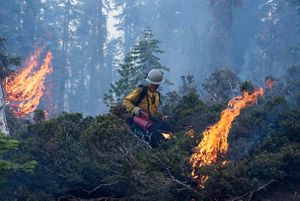



California Legislature: Honor the Will of the Voters. Appropriate Proposition 4 Funds Now!
With the support of nearly 60% of California voters (9M+), Prop 4 provides $10 billion in historic funding to address climate change and protect California’s natural resources. As wildfires, extreme weather, flooding, and drought become more frequent and severe, the need for immediate action is clear.
With federal natural resource funding facing significant cuts, state investments are more critical than ever. We respectfully urge the Legislature to honor voter intent by appropriating Proposition 4 funds during the 2025 legislative session. Please take immediate action to protect the safety and wellbeing of Californians.
TNC’s Prop 4 Priorities for Fiscal Year 2025-26:
- Safe Drinking Water, Drought, Flood, and Water Resilience: $1.2B
- Across the state, hundreds of thousands of Californians still lack access to clean, safe drinking water, and climate change is bringing a new reality to California characterized by extremes: wetter wet years and unprecedented strings of severely dry years. Prop 4 provides critical investments to improve access to clean drinking water, protect critical habitat for fish and wildlife, and increase California’s resilience to flooding and drought.
- $10M for cost-effective migratory bird programs, including BirdReturns, that provide habitat when and where it is most needed
- Wildfire and Forest Resilience: $440M
- California continues to experience record-breaking and devastating megafires. The fires in January that devastated Southern California resulted in the loss of 31 lives and destroyed communities, costing the state more than $250 billion in economic damages. The funding in Prop 4 will support increased wildfire resilience, protect communities and improve disaster response.
- Coastal Resilience: $330M
- Climate change is driving unprecedented habitat and biodiversity losses across California’s coastal, marine, and island ecosystems. Prop 4 includes significant funding to safeguard coastal communities and resources from the impacts of sea-level rise and restore abundance to our coast and ocean by improving management of marine fisheries and protecting and restoring healthy ecosystems.
- Ensure the $75M investment for climate-ready fisheries, island resilience and biosecurity, and kelp restoration is implemented as the Legislature and voters intended
- Protect Biodiversity and Accelerate Nature-Based Climate Solutions: $340M
- California is grappling with an unprecedented biodiversity crisis: approximately 30 percent of our species are at risk of extinction, including iconic species that aren’t found anywhere else in the world. Prop 4 provides critical investments in proven solutions like protecting and restoring wildlife habitat and implementing nature-based climate solutions that will prevent extinctions and preserve California’s rich biodiversity.

Uphold Legislative and Voter Intent for Fisheries, Kelp, and Island Funding
Climate change is impacting California’s iconic coast and ocean, driving unprecedented habitat and biodiversity loss. California has lost more than 96% of our kelp forests, marine fisheries are declining, and islands are becoming extinction hotspots. However, TNC has identified strategies to restore abundance in our ocean.
Prop 4 provides $75 million in critical funding to support three key priorities: climate-resilient marine fisheries, kelp restoration, and island resilience and biosecurity. These investments will facilitate cost-effective fisheries data collection to support more timely and responsive management decisions, drive large-scale kelp restoration projects, and protect and restore California’s unique island ecosystems. TNC urges the Legislature to uphold legislative and voter intent when implementing this funding by ensuring these investments support all three of the priorities explicitly outlined in Prop 4.
TNC’s Priorities for marine fisheries, kelp, and island resilience:
- $39 million for climate-ready and sustainable fisheries management
- $22 million for island biosecurity and resilience
- $14 million for kelp forest restoration and management
Provide Habitat for Migratory Birds Through BirdReturns
BirdReturns is a flexible, cost-effective wildlife habitat marketplace designed to provide migratory birds wetland habitat when and where they need it. Since 2014, BirdReturns has worked with over 200 farmers to create over 180,000 acres of wetland habitat and has generated over $6 million in direct payments to farmers. The program is especially important during drought, when BirdReturns and similar incentive programs deliver the majority of available habitat for birds across the Central Valley.
TNC’s BirdReturns Priorities:
Direct Prop 4 funding to the Department of Fish and Wildlife to continue supporting this innovative program and other similar incentive programs.
Quote: Liz Forsburg Pardi
Californians are taking charge and doubling down on climate action to protect themselves and build a more resilient future while preserving what makes our state special. We are inspired and grateful to see voters back the largest climate and natural resources bond in state history with Prop 4.

Reauthorize California’s Cap-and-Invest Program
As daily headlines of heat waves, droughts, megafires, extinctions and extreme flooding remind us, the climate crisis has come to our state. We must help California’s communities and ecosystems adapt to the effects. In 2006, California made history by passing AB 32 and authorizing the Air Resources Board to create the Cap-and-Trade Program, which has limited emissions and generated roughly $28 billion in needed climate investments.
In April 2024, the Administration released its Nature-Based Solutions Climate Targets as required by AB 1757 (Garcia, 2022). These touted the effectiveness of nature-based climate solutions in not only storing carbon, but protecting communities. Building on more than two decades of work, TNC is partnering with economists and legal experts to explore options to make the Cap-and-Invest Program most effective.
TNC’s Cap-and-Invest Priorities:
- Reauthorize the Cap-and-Invest Program and make important adjustments to elevate nature-based climate solutions as a mechanism to mitigate greenhouse gas emissions and climate impacts to people and wildlife.
- Invest future Cap-and-Invest auction revenues in nature-based climate solutions, creating a back-up reserve of nature-based climate solutions to the price ceiling.
- Dedicate a portion of future Cap-and-Invest auction revenues toward multiyear investments in wildfire resilience and natural working lands.
- Focus any allowable offsets on activities that store more carbon.

NATURE-BASED CLIMATE SOLUTIONS
The conservation, restoration and management of forests, wetlands, grasslands, farmlands and urban green spaces to mitigate climate change and its impacts.

Stewardship of California’s Conserved Lands
The Pathways to 30x30 report found that designating an area as conserved is only the beginning of effective conservation. Protected areas require ongoing stewardship and management.
Stewardship is essential to restoring and maintaining ecosystem health and realizing the full biodiversity benefits of conserved land. As California gets closer to meeting its unprecedented 30x30 goal, it is time to take the next step on stewardship. TNC is developing a policy campaign to elevate stewardship on conserved lands throughout the state.
TNC’s Stewardship Priorities:
- Support the Natural Resources Agency in developing strategies to reduce barriers to and increase support for science-based, adaptive management and stewardship of conserved lands.
- Pilot enhanced stewardship at strategic parks and preserves.
- Through legislation, update the Pathways report with a focus on stewardship, highlighting the impact of successful stewardship on conserved lands.
Quote: Scott Morrison
Nature provides the life support systems we all rely on, from the air we breathe to the water we drink. With nature as our partner, we can solve the planet’s most pressing problems.

Implement California’s Salmon Strategy
As a founding member of the California Salmon and Steelhead Coalition, TNC is a strong supporter of the “California Salmon Strategy for a Hotter, Drier Future.” The Salmon Strategy contains smart, feasible steps to facilitate the recovery of California’s native salmon populations. The actions outlined in the Strategy will both increase drought resiliency for rural communities and save native salmon and steelhead trout populations from the very real threat of extinction posed by climate change.
TNC’s Salmon Priorities:
- Use Prop 4 and the Cannabis Tax Fund dollars to implement the Salmon Strategy to restore stream flow in coastal watersheds.
- Reform permitting structures to allow communities to build infrastructure to store water in the wet season.
- Establish scientifically defensible instream flow criteria to guide water management in times of water shortage.
Our Conservation Strategy: Nature Is Our Solution
Climate change is here. It's up to us to adapt and fight the worst effects. Learn more about how TNC works to protect the ecosystems, species and natural resources that California relies on and that make our state unlike anywhere else. From stopping megafires to restoring our coasts, we access the power of nature to protect the thing that matters most: our home.
Our Plan for California
Learn more about our programs and the key strategies we’re using to protect our future.
Make a Difference
Sign up to receive regular conservation updates from California.
Paid for by The Nature Conservancy in California.

